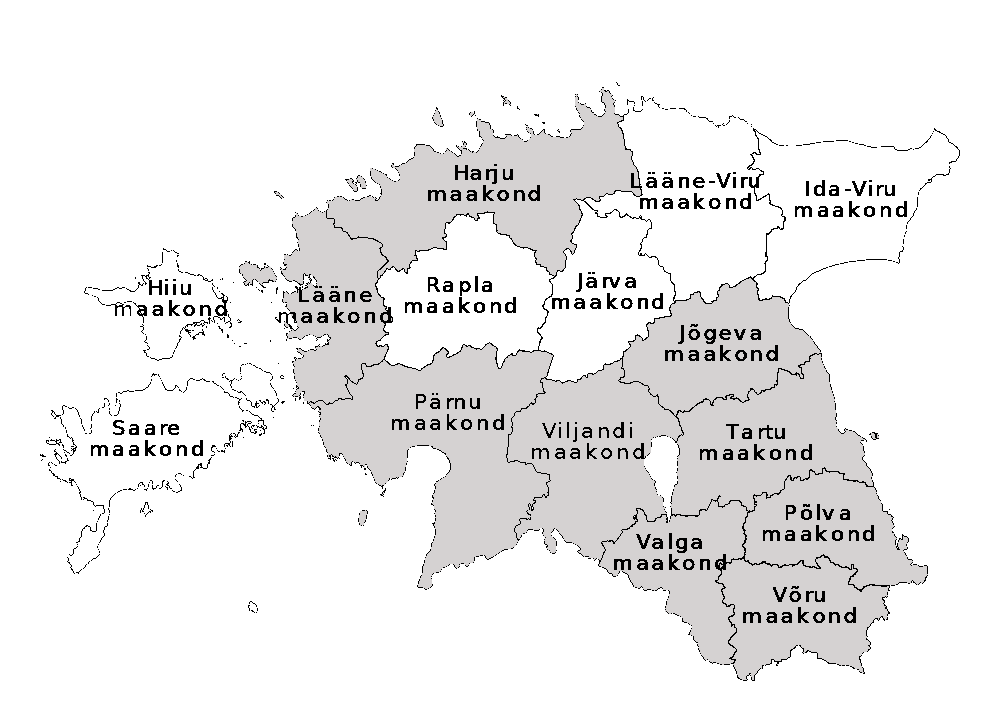
Above: Modern counties of Estonia. Image from Wikipedia, derived from January 2006 data provided by the Estonian Land Board.
Although these names (except for a single example from Metsepole) are all from the area today called Estonia, the situation from the 13th century onwards was more complex. The Duchy of Estonia was the northern part of Old Livonia, and included the area of modern-day Harju county was under Danish rule from the 13th century, until it was sold to the Teutonic Order in 1346. To the north-west of the Duchy lay the Bishopric of Ösel–Wiek, including modern day Lääne county, which primarily used German and Latin in written communication before 1560. It was then sold to Denmark (who also regained the Dutchy of Estonia), and in 1561 became a part of the Swedish empire during the Livonian War (Raun, 1991). This is reflected in the placenames below, which use Old Swedish by, modernly byr, or farm.
In central Estonia, Pärnu county's area was divided between the Bishopric of Ösel–Wiek and the Teutonic Order. Jõgeva was administered by the Teutonic order, along with Viljandi. Tartu belonged to the Hanseatic League, until joining the Polish-Lithuanian commonwealth in 1569. In the south, Võru county was also territory of the Teutonic knights, along with the county of Metsepole, today in northern Latvia. In the modern counties of Põlva and Võru, were from the mid-16th century a part of the Duchy of Livonia within the Polish-Lithuanian Commonwealth, until the area was also conquered by Sweden in the 1620s.
Often I was unable to determine what language the original scribes were using. These placenames may have been recorded in Latin, Danish, middle Low German, Swedish and possibly Polish, Ruthenian or Latin.
These names come from four articles, and one thesis:
As these articles only provided a few place names and personal names each, it seemed sensible to combine them into a single article for our purposes. To assist people who are interested in a particular area, the extracted names have been grouped by modern county, and then sorted alphabetically. Please refer to the Estonian Institute's map of administrative divisions in Estonia and major cities, or the simplified map below, to see the areas this article covers:

(Taken from Laansalu, 2010) |
|
Note: Names have been marked as Latin when they are known to have come from the Danish census book Liber Census Daniæ. |
|
(Faster, 2012) |
(Faster, 2012) |
||
|
|
|
|
(Juurik, 2007) |
|||
|
|
Mustjõe is Estonian for "black river", which is reflected in the middle Low German names (modern Schwarzbach). |
|
Kallasmaa and Faster together mention eight individuals with bynames, all male:
|
|
|